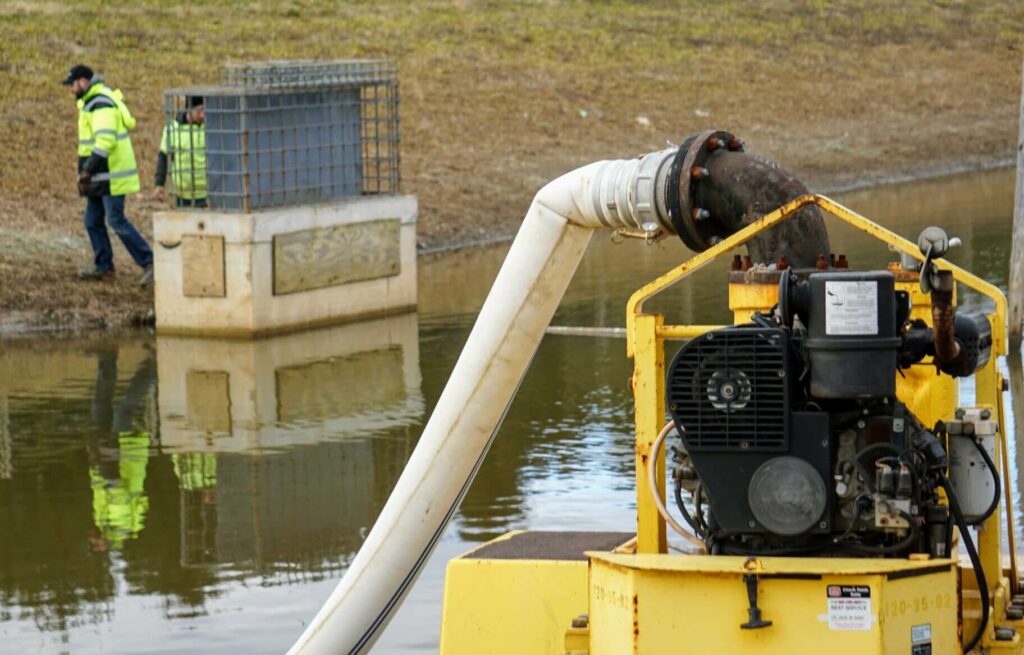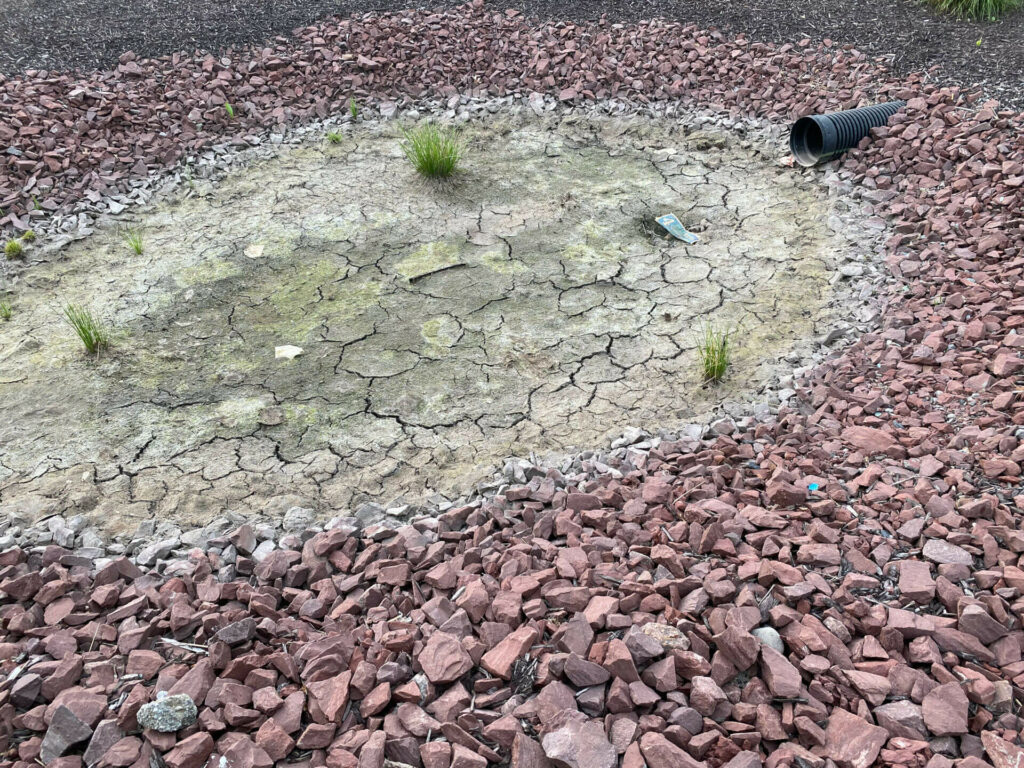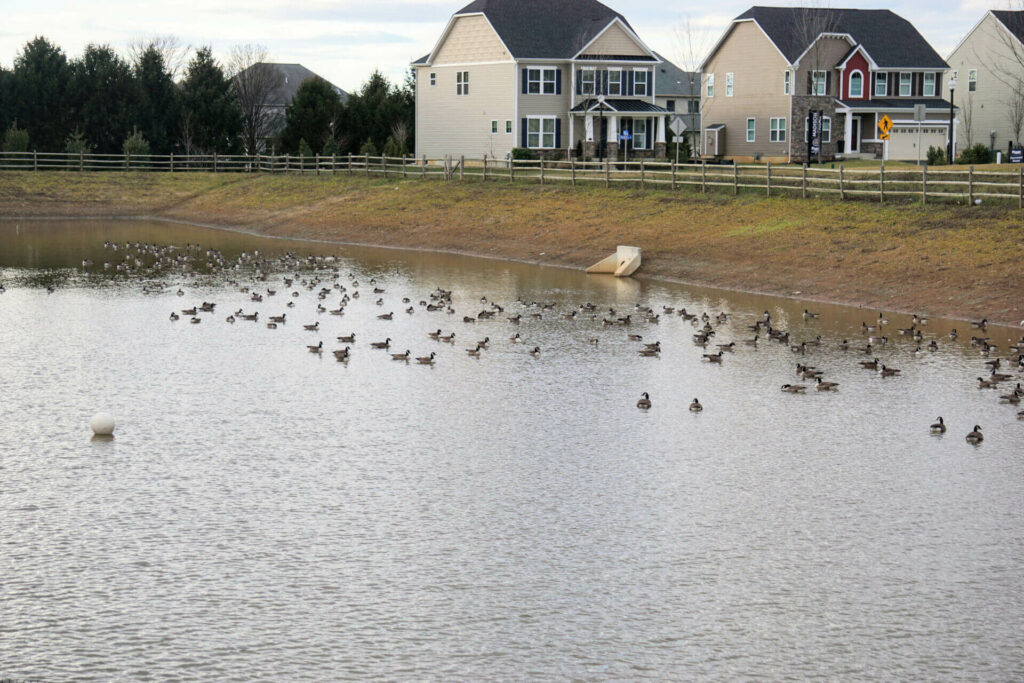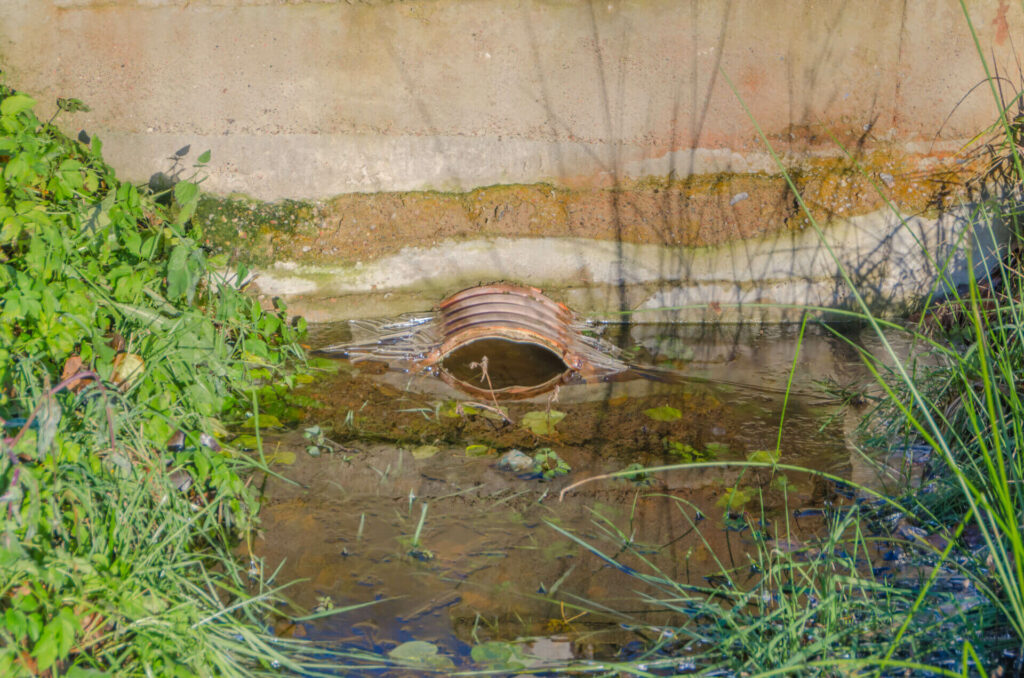
The need for water diversion grows as communities and properties expand. Stormwater runoff can quickly overwhelm municipal sewers and cause flooding of surrounding lakes and waterways. Stormwater management, at the source, will save millions of dollars in expensive maintenance that would otherwise be used to correct erosion or control flooding.
The construction of a basin is a popular form of stormwater management. Basins are designed to collect water and release it slowly enough to avoid floods and erosion.
Detention and retention ponds are the two major categories of basins, and we’ll look at both of them today.
What’s The Difference Between a Retention and Detention Pond?
The primary difference between a detention pond and a retention pond is whether or not the location contains a permanent body of water like most ponds you may be familiar with today. Detention ponds are dry and have a bottom orifice level. While a riser and an orifice are situated at a higher point in a retaining pond, allowing it to retain a certain volume of water.
Both types of basins are crucial for storing and slowing stormwater runoff from surrounding areas, especially in areas where asphalt or concrete construction has taken place. Stormwater runoff runs much quicker from these surfaces than it does from naturally occurring areas, so it must be diverted to ensure the optimal amount of runoff and the rate at which the runoff occurs.
Detention Ponds

Detention ponds are commonly used in areas where there is at least 10 acres of land available. They have a slight slope to help redirect water into the drainage system, while the basin area can retain a large amount of water. Once in the detention pond, the water slowly drains out through the structure’s bottom. You can add large rock or other types of materials to help slow the flow of water into the detention pond and filter out excess debris, depending on your specific needs. Detention ponds are typically less expensive to install, but they can also serve as mosquito breeding grounds.
Advantages of a Detention Pond
-
The vegetative buffer in the surrounding areas can withstand both dry and wet conditions.
-
It could be less expensive to install than a wet retention pond since the size is usually smaller.
Disadvantages of a Detention Pond
-
It still requires a substantial amount of space.
-
Doesn’t improve the quality of the water.
-
It’s possible that it would become a mosquito breeding ground.
-
It can devalue a property while retention ponds may add value.

